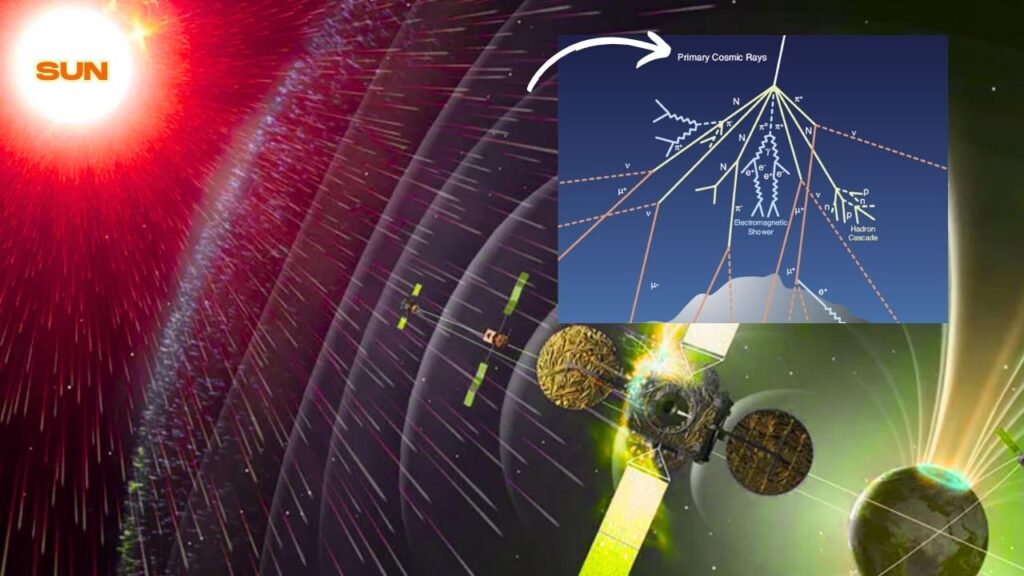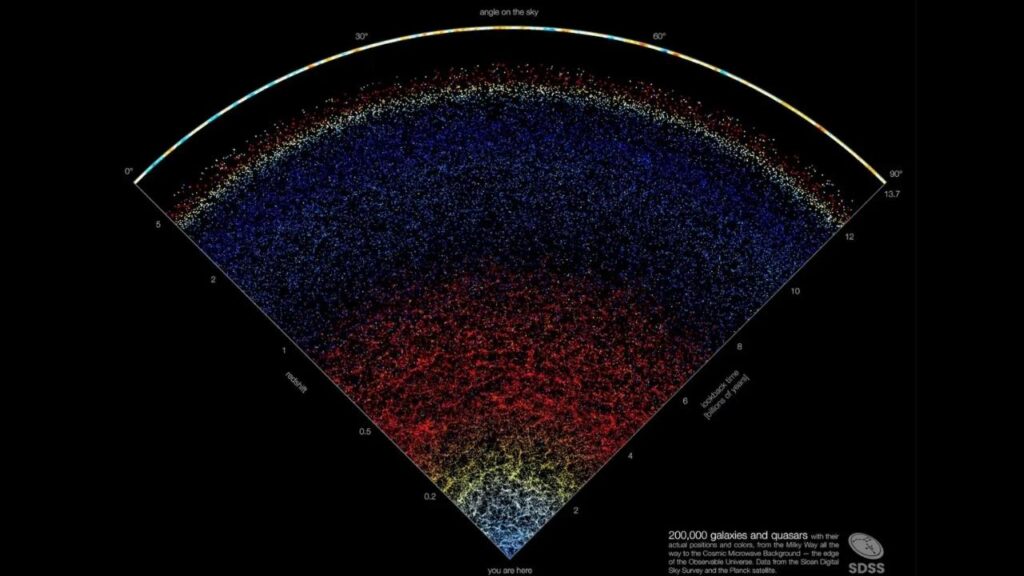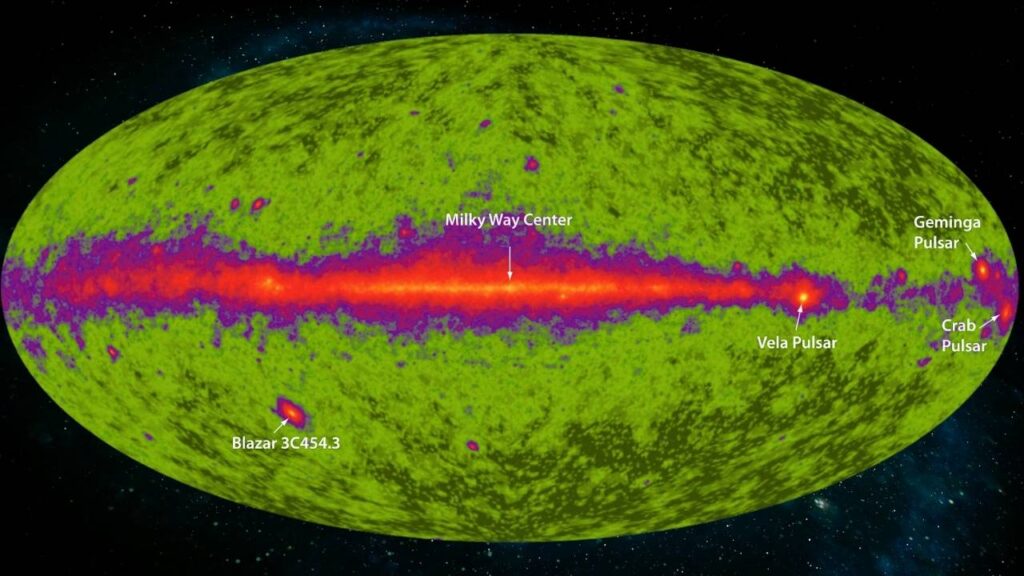The universe is vast, mysterious, and full of surprises. Recently, astronomers have made a discovery that could change how we understand the cosmos. Astronomers uncover strange radiation patterns that may rewrite cosmic theories—this headline is not just for scientists but for anyone who has ever looked up at the night sky and wondered what’s out there.

For decades, scientists have studied the most energetic phenomena in space—cosmic rays and gamma rays. These are powerful forms of radiation that travel across the universe, sometimes reaching Earth. But new observations have revealed patterns that don’t fit with what we thought we knew. These findings could force us to rethink some of our most trusted cosmic theories.
Astronomers Uncover Strange Radiation Patterns That May Rewrite Cosmic Theories
| Aspect | Details | Key Data/Stats |
|---|---|---|
| Discovery | Unusual, ultra-high-energy gamma-ray and cosmic ray patterns in the Milky Way and beyond | Gamma rays: up to 1 billion times energy of visible light; UHECRs: 1 billion times more energetic than gamma rays |
| Major Observatories | LHAASO (China), MACE (India), NASA’s Fermi Telescope, Einstein Probe (China) | LHAASO mapped the Milky Way’s gamma rays; MACE detected gamma rays from galaxy OP 313 |
| Biggest Mystery | Source of ultra-high-energy cosmic rays and gamma rays | Still unknown; possibly a new phenomenon within 300 million light-years |
| Potential Impact | May require rewriting cosmic theories about particle acceleration and cosmic explosions | Gamma-ray burst GRB 971214: as bright as the rest of the universe for 2 seconds |
| Relevance | Helps answer how the universe’s most energetic events occur; could reveal new physics | Origin of cosmic rays is one of the top 11 scientific questions of the 21st century |
The discovery of strange radiation patterns is shaking up our understanding of the universe. By mapping ultra-high-energy gamma rays and cosmic rays, astronomers are uncovering clues to some of the biggest mysteries in space. These breakthroughs remind us that the cosmos is full of surprises, and every new discovery brings us closer to understanding our place in the universe.
What Are Cosmic Rays and Gamma Rays?
Cosmic Rays: The Universe’s Speeding Bullets
Cosmic rays are tiny, charged particles—mostly protons and atomic nuclei—that travel through space at nearly the speed of light. They are so energetic that when they strike Earth’s atmosphere, they create showers of secondary particles that sometimes reach the ground. Cosmic rays come from all directions, but their exact origins have long been a mystery.

Example:
Imagine a cosmic ray as a microscopic bullet fired from a distant galaxy. When it hits our atmosphere, it creates a cascade of even smaller particles, like a firework exploding in the sky.
Gamma Rays: The Universe’s Brightest Light
Gamma rays are the highest-energy form of light. They are invisible to our eyes but can be detected by special telescopes. Gamma rays are produced in the most violent cosmic events—like exploding stars, colliding neutron stars, or matter falling into black holes. When astronomers detect gamma rays, they know something powerful has happened far away.
Example:
If visible light is like a gentle breeze, gamma rays are like a hurricane. They carry far more energy and can travel across billions of light-years.
The Breakthrough Discoveries
1. Mapping the Milky Way’s Gamma Rays
China’s Large High Altitude Air Shower Observatory (LHAASO) recently completed a detailed survey of the Milky Way, mapping out where the most energetic gamma rays come from. This “treasure map” revealed unexpected hotspots—regions where gamma rays are far more intense than scientists had predicted.

- Why this matters: These hotspots suggest there are unknown “super accelerators” in our galaxy—places where nature boosts particles to energies far beyond what we can create on Earth.
2. The Mystery Hotspot Beyond Our Galaxy
NASA’s Fermi Telescope has detected a mysterious region in the sky, outside the Milky Way, that emits an unusually high concentration of high-energy gamma rays and cosmic rays. This “hotspot” is not where scientists expected to find such intense radiation. It may be linked to ultra-high-energy cosmic rays (UHECRs), which are the most energetic particles known in the universe.
- Key fact: The gamma rays from this region have about a billion times more energy than visible light. The UHECRs are even more energetic—another billion times higher.
3. Gamma-Ray Bursts: The Universe’s Most Powerful Explosions
Astronomers have observed gamma-ray bursts (GRBs) that are so powerful, they briefly outshine the entire universe. One famous burst, called GRB 971214, released more energy in two seconds than our Sun will emit in its entire lifetime. These bursts are thought to be caused by the collapse of massive stars or the collision of neutron stars.
- Implication: Such bursts challenge our understanding of how much energy the universe can release in a single event.
4. Distant Galaxies and Ancient Explosions
India’s Major Atmospheric Cherenkov Experiment (MACE) telescope has detected strong gamma-ray signals from a distant galaxy known as OP 313, located about 8 billion light-years away. This discovery pushes the boundaries of how far we can observe these energetic events and helps scientists understand the limits of gamma-ray emission from galaxies.
- Fun fact: MACE is the world’s highest gamma-ray telescope, located at an altitude of 4,300 meters in Hanle, Ladakh, India.
5. Unusual Pulsar Wind Nebulae

Recent studies have linked certain pulsar wind nebulae—bubbles of high-energy particles created by spinning neutron stars—to the production of fast cosmic rays. Some of these nebulae show unexpected shapes and asymmetries, suggesting that pulsars can accelerate particles in ways scientists did not anticipate.
- Why it’s interesting: These findings add to the mystery of how and where cosmic rays are accelerated to such high energies.
Why Are These Discoveries So Important?
Challenging Old Theories
For many years, scientists believed that most cosmic rays and gamma rays came from known sources like supernovae (exploding stars), black holes, or clusters of massive stars. The new discoveries show patterns and energies that don’t fit these models. Some sources are more powerful, more distant, or simply don’t match any known object.
Raising New Questions
These findings force astronomers to ask:
- Where are these “super accelerators” located?
- What natural processes can create such extreme energies?
- Could there be new, unknown objects or phenomena in the universe?
Opening Doors to New Physics
If existing theories can’t explain these observations, scientists may need to develop entirely new ideas—possibly even changing our understanding of how energy and matter behave in the universe. This is how science grows: each new discovery leads to new questions and, sometimes, new laws of nature.
How Do Astronomers Study These Strange Patterns?
Step 1: Detecting the Radiation
Special telescopes like LHAASO, MACE, and NASA’s Fermi are designed to detect gamma rays and cosmic rays. These instruments use advanced sensors to spot even the faintest signals from space.
Step 2: Mapping the Sky
By recording where these rays come from, scientists create detailed maps of the sky. These maps help identify hotspots and patterns, much like a treasure map points to hidden gold.
Step 3: Comparing and Analyzing Data
Astronomers compare gamma-ray maps with cosmic ray data to look for overlaps and connections. If a gamma-ray hotspot matches a cosmic ray hotspot, it could mean they share a common source.
Step 4: International Collaboration
Space is big, and no single telescope can see everything. That’s why scientists around the world share their discoveries and work together to confirm findings. This teamwork helps ensure that results are accurate and reliable.
Practical Advice: How Can You Get Involved or Stay Informed?
For Students and Young Learners
- Visit planetariums and science museums to learn more about cosmic rays and gamma rays.
- Join astronomy clubs or participate in school science projects related to space.
- Use educational websites to explore interactive maps and simulations about cosmic phenomena.
For Enthusiasts and Professionals
- Follow updates from major observatories like NASA, LHAASO, and MACE for the latest discoveries.
- Participate in citizen science projects that allow you to help analyze real astronomical data.
- Attend conferences or webinars to hear directly from scientists working on these mysteries.
For Everyone
- Stay curious! The universe is full of surprises, and new discoveries are happening all the time.
- Discuss new findings with friends and family. Sharing knowledge helps everyone learn.
China’s Space Program Heats Up With 16 Launches and Mars Sample Return Plans
New Horizons Successfully Detects Distant Starlight in Deep Space Experiment
SpaceX Launches UK Satellite to Manufacture Semiconductors in Space for Quantum Tech
FAQs About Astronomers Uncover Strange Radiation Patterns That May Rewrite Cosmic Theories
What are cosmic rays?
Cosmic rays are high-energy particles, mostly protons and atomic nuclei, that travel through space at nearly the speed of light. They originate from outside our solar system and can have energies far greater than anything produced on Earth.
What is a gamma-ray burst?
A gamma-ray burst is a sudden, intense flash of gamma rays, usually caused by the collapse of a massive star or the collision of neutron stars. These bursts are the most powerful explosions in the universe.
Why is the origin of cosmic rays a mystery?
Because cosmic rays are charged, their paths are bent by magnetic fields in space. This makes it difficult to trace them back to their sources. Scientists use gamma rays, which travel in straight lines, as clues to help solve the mystery.
What is a “super accelerator” in space?
A “super accelerator” is a natural object or event, such as a supernova or black hole, that can boost particles to extremely high energies—much higher than any human-made particle accelerator.
How do these discoveries affect everyday life?
While the direct impact is mostly scientific, understanding cosmic rays helps protect astronauts and satellites from radiation. It also inspires new technology and deepens our knowledge of the universe.
Are these discoveries dangerous for Earth?
No, the cosmic rays and gamma rays detected by astronomers are not dangerous to people on Earth. Our atmosphere protects us from most of this radiation. However, understanding it is important for space travel and satellite safety.
Will these discoveries change how we teach science?
Possibly! As scientists learn more about these strange radiation patterns, textbooks and science lessons may be updated to reflect the latest knowledge about the universe.






